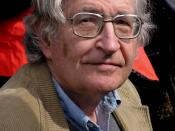INTRODUCTION
Many linguists agree that there is no all-encompassing definition of Language. However, language is generally described as a system of sounds used to link sound using words and sentences to meaning (Finegan & Besnier 1989, p. 1).
Language can be described as a symbolic system in which sounds and meanings are assigned to each other, allowing humans to communicate what we are thinking and how we are feeling. In other words, there is an arbitrary aspect of language with meanings assigned to words and sounds. As native speakers of a language, we know that words are arbitrarily given meaning to express ideas.
For example, a book is only a book because we have assigned that specific meaning to the sound and word book. The word for book could have been any other word. Native speakers have the knowledge to realize that the connection between words, sounds and meanings are not a natural one.
Sounds represent objects. Context also helps us to interpret the meaning of utterances.
COMPETENCE AND PERFORMANCE
Noam Chomsky introduced two terms, referred to as competence and performance. According to Chomsky, competence refers to a native speaker's knowledge of a language (Finch 2000, p.17). As native speakers of English, for example, we have linguistic competence of the English language sounds, sentence structures and word meanings. This knowledge allows speakers to speak the language fluently.
However, this knowledge is for the most part subconscious and, as a result, the speaker does not always realize that they have this knowledge. As an example, I can jump, dance and run very easily. However, I cannot explain the neuro-science involved that makes these physical actions possible. How native speakers possess this knowledge and use it to speak a language is similar to the above example. Finch ( 2000, p.17), explains that,


